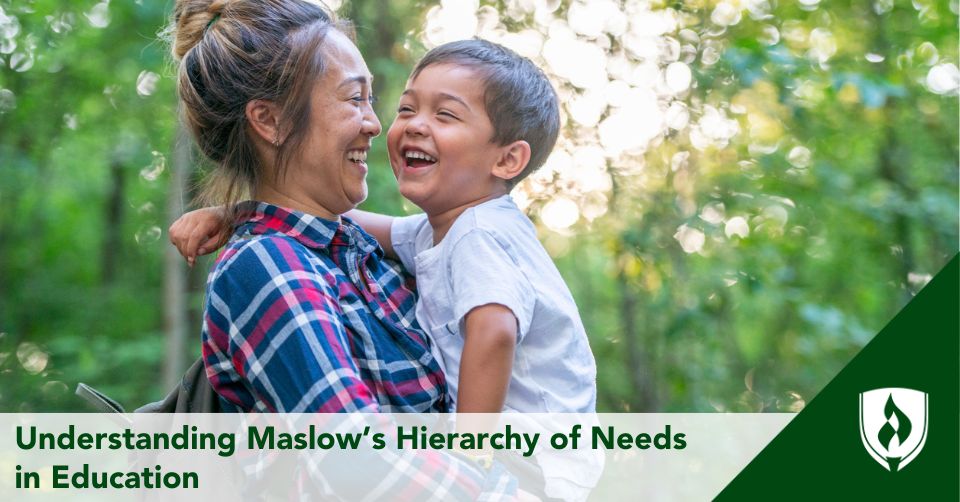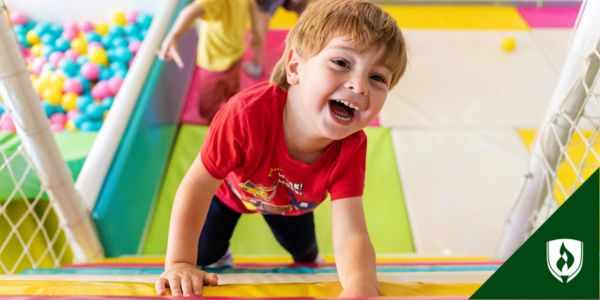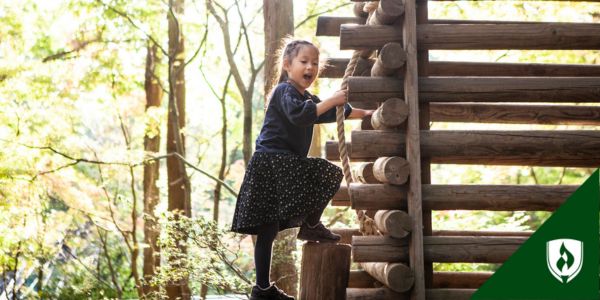
How can Maslow’s hierarchy of human needs assist early childhood educators and caregivers in understanding young children? How might it benefit parents?
If you work with young children, you know they require love and safety. That comes first. But there’s still more your little ones need. Maslow’s hierarchy delves much deeper.
Maslow’s hierarchy has proven beneficial across various industries over the years, yet its potential to enhance early childhood education (ECE) remains largely untapped. Recognizing this gap, Professor Dr. Kristen Walley dives into the application of Maslow's theory in ECE.
What if we investigate children's motivations and gain a deeper understanding of their cognitive psychology and behaviors through the lens of Maslow's hierarchy of human needs?
This approach aligns closely with the principles of educational psychology, providing a framework for an educational psychologist or instructor to understand human behavior and the learning process. How do we structure environments and utilize strategies to support a need, instead of labeling it as challenging behavior? Walley’s webinar covers all of this—watch here, or feel free to read on.
What Would Maslow Think: Challenging Behavior or Unmet Need?
First, what is Maslow’s hierarchy of human needs?
Maslow's hierarchy of needs is a psychological theory that outlines a five-tier model of human needs, arranged in a pyramid. From the base to the top, these needs are physiological, safety, love and belonging, esteem, and self-actualization, with each level needing to be fulfilled before progressing to the next.
This model can explore how cognitive processes, the cognitive perspective and educational development impact the motivation and behavior of school-age children. Teachers and educational psychologists work to apply these principles to create more effective learning environments.
Self-actualization
Self-actualization represents the highest level of Maslow's hierarchy of needs. It involves realizing one's full potential and seeking personal growth, self-improvement, and self-fulfillment. People at this stage pursue their passions, creativity, and problem-solving abilities, striving to be the best version of themselves.
Esteem needs
Esteem needs include the desire for respect, self-esteem, and recognition. This level is divided into two categories: esteem for oneself (self-respect, achievement, mastery) and the desire for respect from others (status, recognition, reputation). Meeting these needs leads to feelings of confidence and accomplishment.
Love and belonging needs
Love and belonging needs focus on social relationships and connections. This human motivation includes the need for friendships, family, intimacy, and a sense of belonging within a group. Satisfying these needs helps individuals feel loved, accepted, and part of a community.
Safety needs
Safety needs pertain to the need for security and protection from physical and emotional harm. This includes physical safety (shelter, health, and well-being) and financial security (employment, resources). Meeting these needs provides a sense of stability and freedom from fear. Understanding the cognitive development and behavioral perspective of children helps educators develop strategies to meet these needs in schools.
Physiological needs
Physiological needs form the foundation of Maslow's hierarchy. They are the basic requirements for human survival, such as air, water, food, shelter, sleep, and clothing. These needs must be met before individuals can focus on higher-level needs. Teachers often collaborate with other educators, other educational psychologists, and special education programs to ensure these basic needs are met for all students.
It’s a two-way street
Maslow’s hierarchy, for better or for worse, is a two-way street. People can move up and down the pyramid at any given time throughout the week and sometimes from moment to moment as needs shift. Also, multiple needs can exist simultaneously. For example, a child could be hungry and in need of love and support from their trusted caregiver.
The pyramid can help identify which need may take priority and provide direction in our strategies to work towards goals or needs at the same time.
How to support a child’s needs in ECE
It is important to recognize that an educator cannot always meet a child’s need directly. However, there are ways to provide indirect support. For example, an educator cannot buy a child a house to solve their unstable housing, but they can connect families to community resources and share their needs with relevant community members.
Support physiological needs by…
1. Program policies: Establishing guidelines that ensure children's basic needs, such as nutrition and rest, are met.
2. Flexible schedules: Creating adaptable schedules that accommodate individual needs within the group setting.
3. Sharing community resources: Providing families with information and access to local resources that can support their children's well-being.
4. Bringing community resources into the program: Inviting local organizations to participate in the program, offering additional support and services directly to children and families.
Support safety needs by…
1. Predictable schedules and routines: Consistency can offer children a sense of security and calmness by providing structure. Picture schedules can effectively communicate the daily agenda, helping children understand what activities are coming up and when it's time to go home.
2. Positive relationships: Fostering positive relationships between educators and children, as well as among peers, helps create a supportive and nurturing environment. Strong relationships contribute to children's emotional security and social development.
3. Health, Safety, and Nutrition (HSN) program policies and practices: Implementing these policies and practices ensures that children's basic needs are consistently met. These policies can include providing nutritious meals, maintaining a safe and healthy environment, and promoting physical activity.
4. Comfort item and calming spaces: Providing children with comfort items and designated calming spaces helps them feel secure and relaxed. These items and spaces can be used to soothe children during times of stress or transition, promoting their emotional well-being.
Support the need for love and belonging by…
1. Warm welcome each day: Greeting each child warmly as they arrive helps them feel valued and secure, setting a positive tone for the day.
2. Representations of children and families in multiple areas of program: Displaying images, artwork, and cultural artifacts that reflect the diversity of children and their families fosters a sense of belonging and inclusion.
3. Authentic materials and activities: Using genuine, culturally relevant materials and activities in the program engages children meaningfully and supports their learning and development.
4. Positive relationships: Fostering positive relationships between educators and children nurtures emotional and social growth in a supportive environment.
Support self-esteem needs by…
1. Understanding our own needs: Recognizing and addressing our own needs as educators helps us provide better support and empathy to children, fostering their self-esteem.
2. Differentiated instruction: Adapting teaching methods to cater to the diverse abilities and learning styles of each child ensures that every student feels capable and valued.
3. Realistic expectations: Setting achievable and developmentally appropriate goals for children helps them experience success, boosting their confidence and self-worth.
4. Intentional praise and interactions: Providing specific and meaningful praise, along with engaging in thoughtful interactions, reinforces positive behaviors and strengthens the bond between educators and children. Intentional praise helps children recognize their achievements and encourages ongoing positive behavior.
Support self-actualization by…
1. Mixing proactive and reactive strategies: Combining proactive approaches, such as setting clear expectations and creating structured environments, with reactive strategies, like addressing issues as they arise, helps manage children's behavior effectively and maintain a positive learning atmosphere.
2. Figure out what the behavior is communicating: Interpreting children's behaviors as forms of communication allows educators to identify underlying needs or concerns. Understanding the root causes of behaviors enables more effective and compassionate responses.
3. Supporting needs: Addressing the physical, emotional, and social needs of children ensures their overall well-being and fosters a conducive environment for learning and development. Meeting these needs helps children feel secure, valued, and ready to engage in the educational experience.
Go deeper into early childhood education best practices
Early childhood education is complex—we are talking about developing brains after all! The research and areas of study are continually unfolding. If you’re passionate about how little ones grow, the field of ECE needs you!
Explore Rasmussen University’s ECE programs page to discover more.
Rasmussen has forged partnerships with corporate alliances like Learning Care Group®, KinderCare® and Bright Horizons®, providing tuition grants that allow their employees to benefit from reduced tuition rates if they qualify. Connect with these employers for more information.
Learning Care Group® is a registered trademark of LEARNING CARE GROUP (US)
KinderCare® is a registered trademark of KINDERCARE EDUCATION LLC
Bright Horizons® is a registered trademark of BRIGHT HORIZONS FAMILY SOLUTIONS LLC




